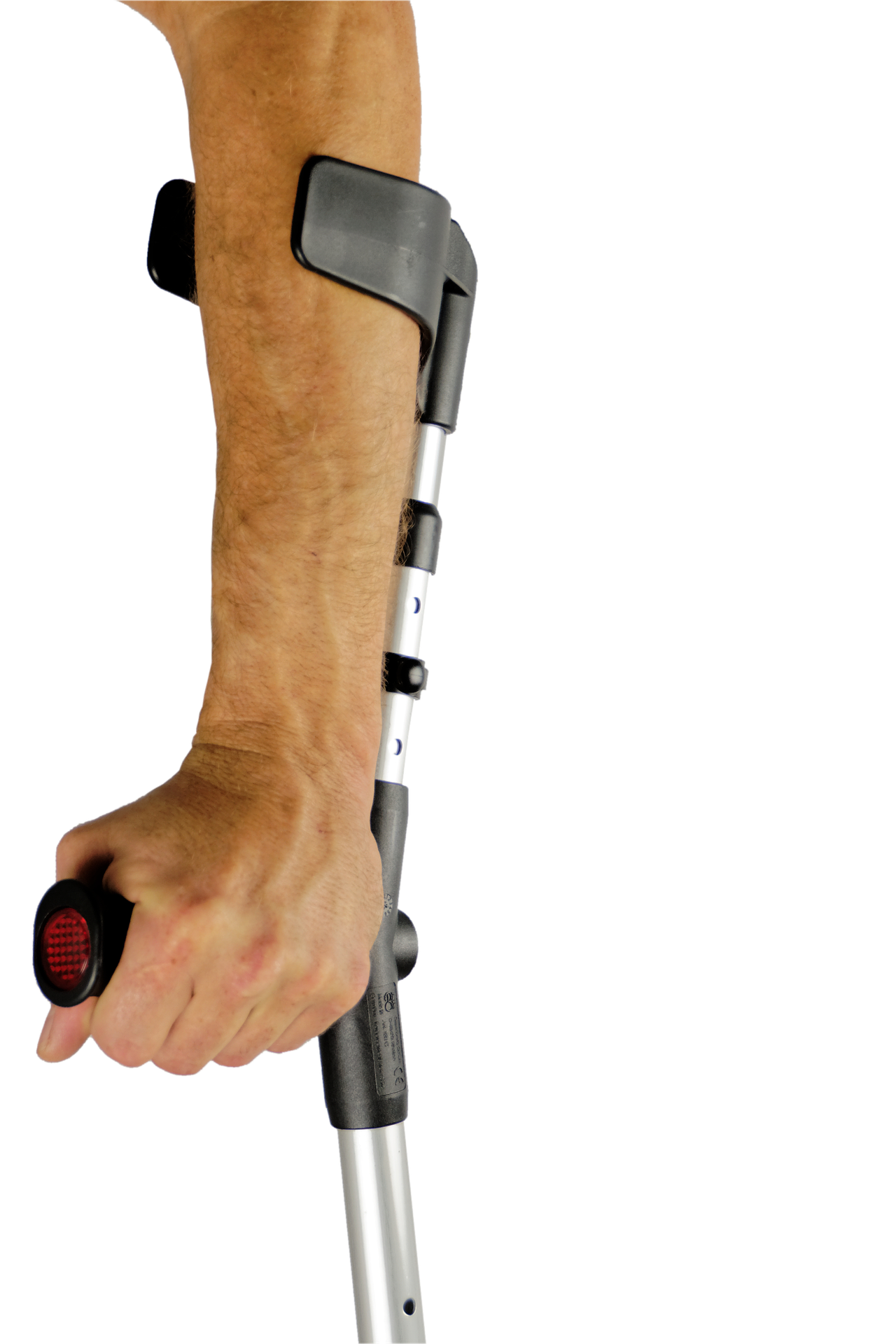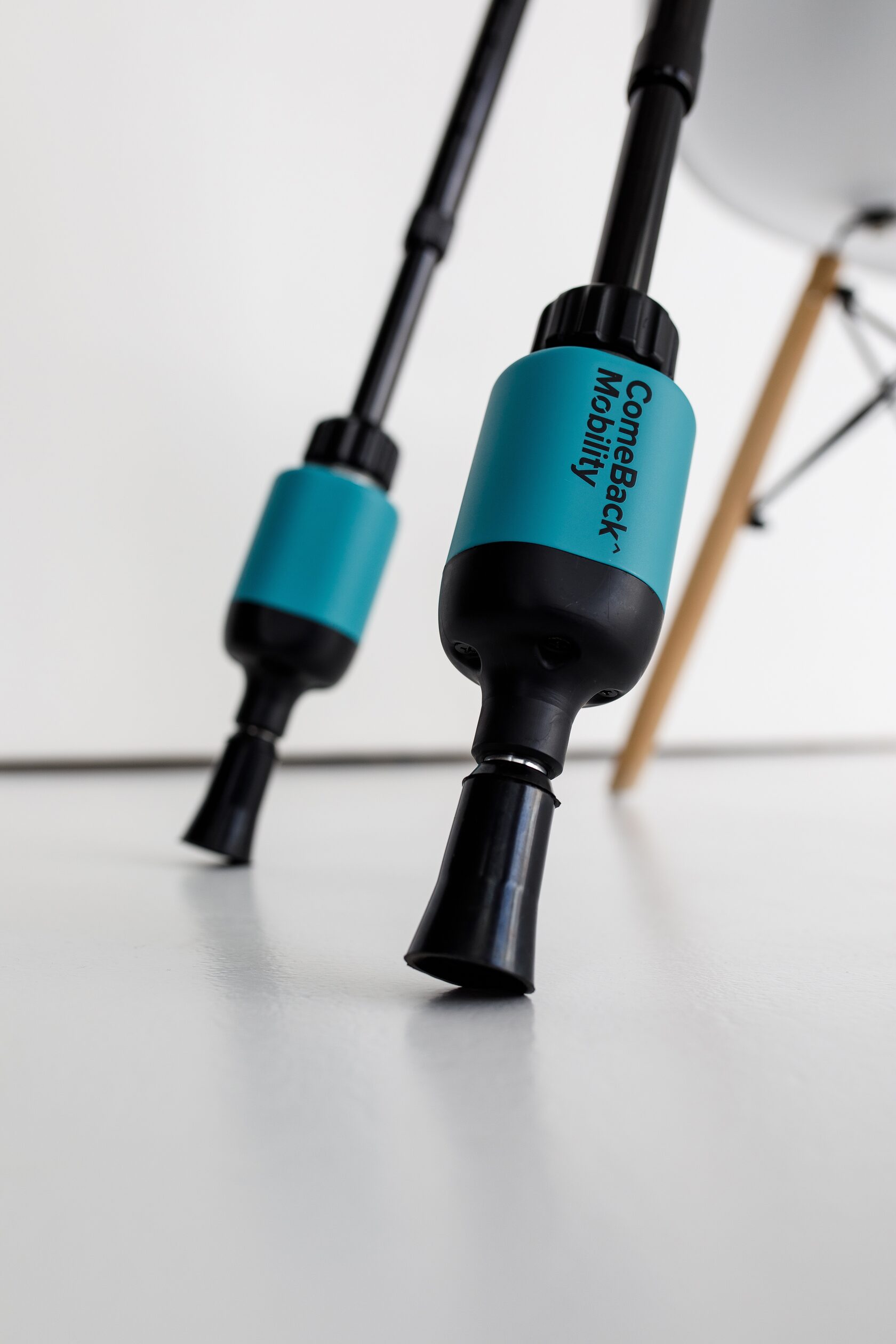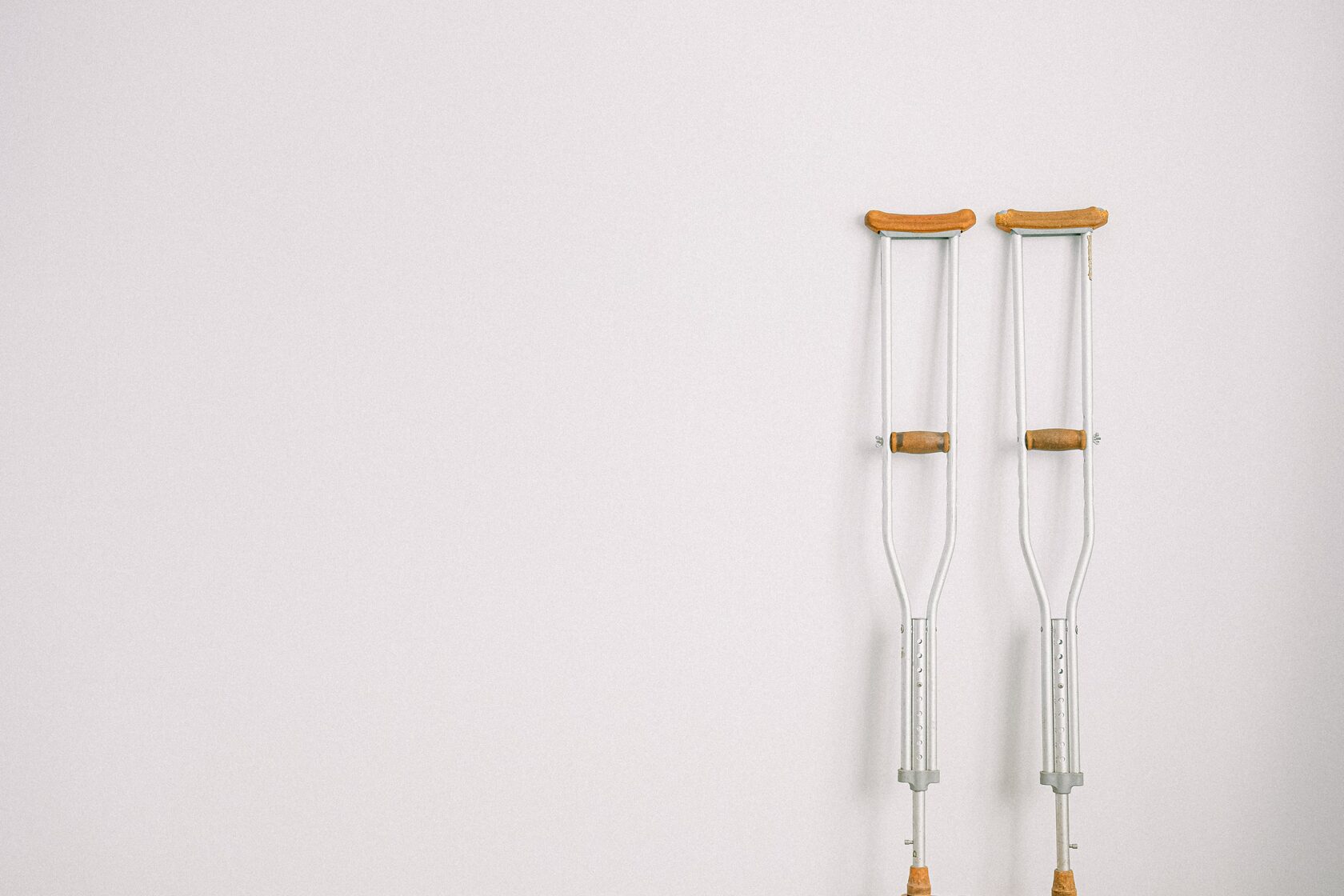As you start your injury recovery with the use of crutches, or another assistive device, here are some challenges you may encounter and solutions to keep you safe.
Difficulty with balance





You may find it difficult to keep your balance due to pain, splinting devices on your leg, and limited mobility from the injury or surgery.
You will need some time to practice and improve your steadiness while walking on crutches. On all assistive devices, it is important to get your balance in standing before taking a step forward. This helps prevent falls.[2]
If regaining good balance with the help of crutches is difficult, you can use other supportive equipment to maintain an independent lifestyle. Let your rehabilitation team know if you are not steady on crutches and they can recommend other devices for home use.[1]
Increased risk of falls





Not feeling steady, and not having both hands free to catch your balance, you are at an increased risk of experiencing a fall. To prevent falls, your physical therapist has taught you how to use crutches for the different situations you will encounter at home: such as getting up and down from a chair, the bed, and using stairs.
If you encounter a scenario that you are unsure of how to navigate, ask your PT to guide you through it.
Until that time, try to avoid areas which cause you to be unsteady, or ask someone to guard you if the scenario is unavoidable. Try to avoid uneven surfaces and slippery floors.
To make your home safe while you are on crutches, ask your family and friends to help secure or remove obstacles in your walking paths. These include throw rugs, electrical cords, furniture, and other items that could cause you to trip. Bathrooms are a place where falls often happen due to slick surfaces, difficulty using an assistive device in a small area, and having to get up from a toilet or out of a shower or tub. Installing supportive railings and grab bars will help you keep your balance and keep you safe in the bathroom.
Preventing a fall is easier than having a delayed recovery due to a fall!
Sore arms and hands
If you are experiencing upper arm soreness, armpit chafing, or numbness and tingling in your hands, check your posture and positioning on the crutches. Remember to stand tall and not slouch on the crutch arms. In proper posture and crutch positioning, you should be able to place two to three fingers between the armpit and the top of your crutch.
With your arms stretched along the body and relaxed, the crutch hand grip should be level with your wrist. Holding the hand grips, you should keep your elbows slightly bent (about 30 degrees.)
This encourages your arm muscles to do the work and decreases the stress on your wrists. As you move between different shoes and sneakers, you may see that your height changes. For example, a running sneaker usually has a higher heel than a street flat soled sneaker. Here you may need to make alterations to your crutches to maintain ideal crutch positioning

If you are experiencing upper arm soreness, armpit chafing, or numbness and tingling in your hands, check your posture and positioning on the crutches. Remember to stand tall and not slouch on the crutch arms. In proper posture and crutch positioning, you should be able to place two to three fingers between the armpit and the top of your crutch.
With your arms stretched along the body and relaxed, the crutch hand grip should be level with your wrist. Holding the hand grips, you should keep your elbows slightly bent (about 30 degrees.)
This encourages your arm muscles to do the work and decreases the stress on your wrists. As you move between different shoes and sneakers, you may see that your height changes. For example, a running sneaker usually has a higher heel than a street flat soled sneaker. Here you may need to make alterations to your crutches to maintain ideal crutch positioning

Increased risks of improper weight-bearing





As you already know, keeping to a proper weight-bearing status prescribed by your doctor is a must for a successful recovery. Excessive loading on an injured leg is serious. It can reinjure your limb and prolong your rehabilitation period. Similarly, not loading enough can also have negative effects.
It is normal to struggle to understand if you are placing too much or not enough weight on your leg. There are steps to get you onboard with your proper weight-bearing.
First, let your PT know if you are unsure of how to maintain your weight-bearing restriction. They will help you with this task during your next PT session
Second, take your scale and become familiar with what the prescribed percentage of your body weight feels like on your injured leg. For example, if you are prescribed 30% partial weight-bearing, calculate 30% of your body weight (weight x .30 = allowed weight on scale). Then you step onto the scale with your involved leg up to the allowed weight number from the equation
The third, and very reliable, solution is to use Comeback Mobility Smart Crutch Tips and Apps. Through a dynamic system, they provide instant information about each step you take on crutches. If your place too much weight on your injured leg, the Crutch Tips will let you know so that your next step is keeping to your WB restrictions
This helps prevent complications and possible doctor appointments and hospital admissions due to placing too much weight on the involved leg.
ComeBack Mobility: Where Every Step Matters
ComeBack Mobility developed Smart Crutch Tips and supportive mobile apps for you to feel confident in maintaining your weight-bearing prescription.
Smart crutch tips replace your crutch’s original crutch tips and are used to measure the pressure that you place on your injured leg. The Crutch tips and mobile app instantly provide weight-bearing feedback to you and your healthcare provider. In this way, you receive a warning about overloading and can instantly modify your walking by taking a proper weight-bearing step.
The healthcare provider can see your compliance level on their dashboard and flag any concerning overloading behaviors. This team effort helps reduce risks of complications from improper weight-bearing and keeps you on your path of recovery.

ComeBack Mobility developed Smart Crutch Tips and supportive mobile apps for you to feel confident in maintaining your weight-bearing prescription.
Smart crutch tips replace your crutch’s original crutch tips and are used to measure the pressure that you place on your injured leg. The Crutch tips and mobile app instantly provide weight-bearing feedback to you and your healthcare provider. In this way, you receive a warning about overloading and can instantly modify your walking by taking a proper weight-bearing step.
The healthcare provider can see your compliance level on their dashboard and flag any concerning overloading behaviors. This team effort helps reduce risks of complications from improper weight-bearing and keeps you on your path of recovery.

Hopefully your concerns about using crutches have been alleviated and you have strategies to be successful in your rehabilitation. When in doubt, ask your healthcare providers for assistance, they also want you to Comeback to mobility quickly.
SOURCES
- Patient compliance with touchdown weight bearing after microfracture treatment of talar osteochondral lesions
- Patient compliance with postoperative lower extremity touch-down weight-bearing orders at a level I academic trauma center
- (PDF) Weight Bearing Compliance after Foot and Ankle Surgery
- Factors Affecting Compliance With Weight-Bearing Restriction and the Amount of Weight-Bearing in the Elderly With Femur or Pelvic Fractures
- Application Of Calculating The Maximum Permissible Load On The Femur After Osteosynthesis
- Current advances in training orthopaedic patients to comply with PWB instructions
- Force Plates – Do you need one?
- Different in-shoe devices for partial weight bearing
- Effectiveness of a Simple Auditory Feedback Insole






